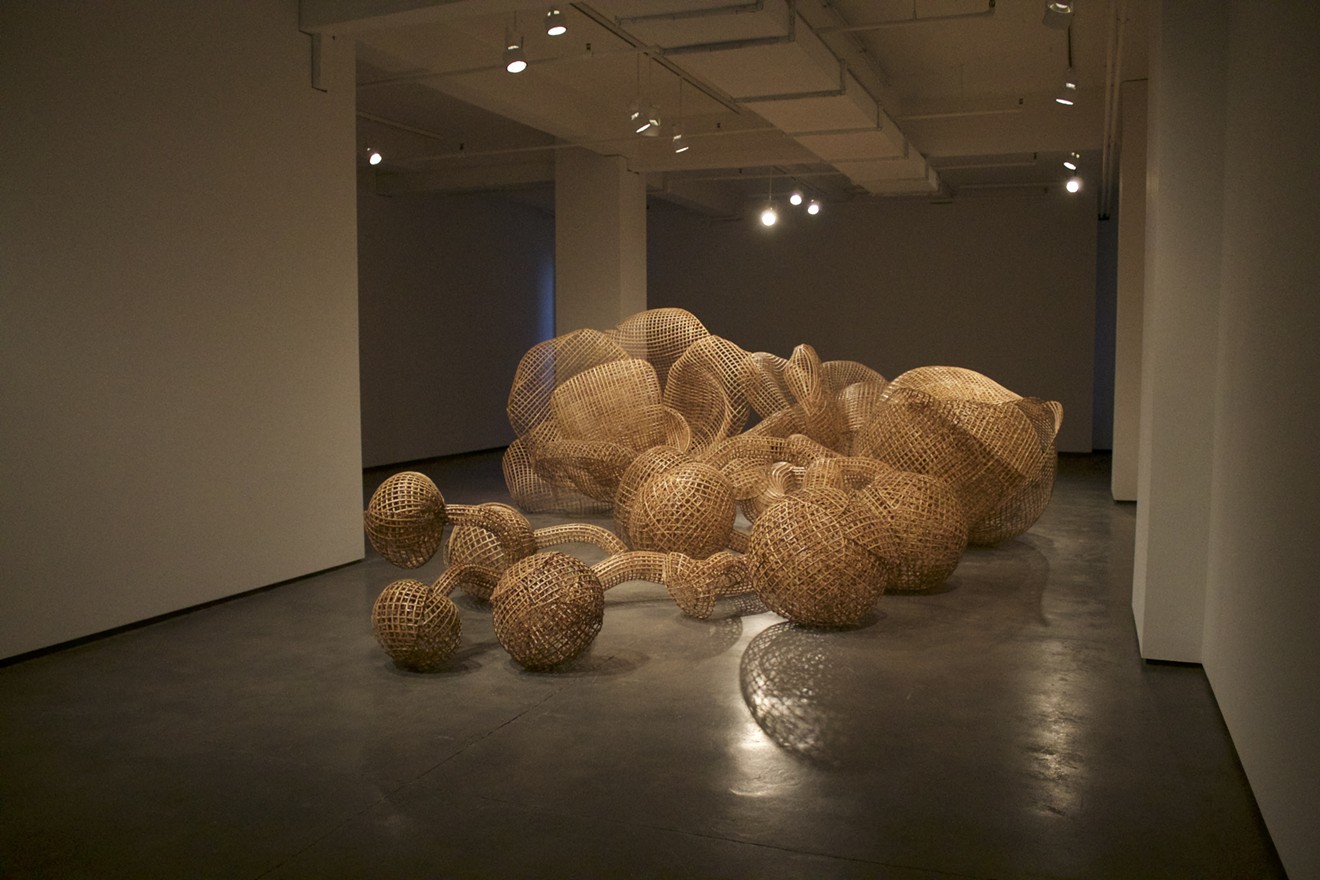Pich was in Dallas to speak at the Crow Collection of Asian Art several weeks after the museum opened Hidden Nature: Sopheap Pich, an intimate exhibition of Pich’s “Rang Phnom Flower,” his largest single-form bamboo and rattan sculpture to date.
A Google search of Pich will turn up innumerable references to the artist as “Cambodia’s most internationally prominent contemporary artist,” and indeed, Pich has made a name for himself in the highly competitive art world; his work is in the collections of the Metropolitan Museum of Art (where he was the first Southeast Asian artist to have a solo show), New York's Guggenheim Museum and the Centre Georges Pompidou, to name a few. His work was included in the main exhibition of this year’s 57th Venice Biennale.
Pich is reluctant to acknowledge any single influence on his work lest his work be reduced to a single interpretation. “Rang Phnom Flower” and his body of work as a whole are, for Pich, much more than the work of a Cambodian artist.
Pich began his fine art career as a painter working in the U.S. after completing his MFA at the School of the Art Institute of Chicago. (His family relocated to the U.S. from Battambang, Cambodia, when he was a teenager.) But it wasn’t until Pich returned to Cambodia in 2002 that he began working in sculpture, a medium with which he has become closely associated.
“There was just a certain point in my life when I understood that painting wasn’t really for me,” Pich says. “I was always finding myself hitting a wall. Whatever I wanted to get out of myself, I couldn’t do it with painting.”
He began looking for material and found rattan both interesting to work with and, perhaps more important at the time, cheap.
“I was very poor, [and] I knew I wanted to make just the form. I didn’t care what material it was going to be made out of.”
Fifteen years later, Pich as an artist has become nearly synonymous with the rattan he uses to weave and craft his delicate pieces. “I don’t think of [rattan] as absolutely necessary, but I do think it’s a language. I talk in bamboo, and I talk in rattan,” he says.
"[Making a flower sculpture], you can fail miserably. You can easily become a cliché ... so I try to challenge that idea by just saying, 'OK, so what if I spend six months or a year just making a giant flower?'" – Sopheap Pich
tweet this
Pich’s craftsmanship is striking. The artist and his assistants have transformed rattan and bamboo into huge cityscapes; amorphous, organlike sculptures; the Buddha; rafts and more.
Working with rattan and bamboo is arduous, a fact many have used as a way of equating Pich’s practice to his nationality and to the Cambodian people’s recent decades of suffering under the Khmer Rouge.
“There’s certainly truth in suffering; you can’t omit that,” he says. “Even though sometimes I don’t try to make work about suffering, there’s suffering in this flower. It’s a beautiful suffering, though.”
For Pich, his art is also about slowing down.
“It’s about appreciating the process, about not saying that if you work slowly it’s a waste of time,” he says. “Focusing, laboring — that’s just a part of life.”
The cannonball, or rang phnom flower, as it is called in Khmer, is the subject of the work on view in Dallas. The cannonball flower is found throughout Cambodia and is often planted near Buddhist temples because it is associated with the type of tree under which the Buddha was born.
“There are some things in the teaching of the Buddha that I take into my life, but I don’t do it in a conscious way,” says Pich, who says he does not subscribe to any religion and draws most inspiration from the purity of nature.
“I am a big fan of nature,” he says. “I learn from nature, I draw from nature, so I figure there’s a lot more to be learned from nature in terms of art-making than, let’s say, anything else, actually.”
However, the spiritual resonance the flower has, especially for Cambodian viewers, is not lost on Pich. It was certainly involved in his thinking, but for Pich the flower was much more an attempt to explore nature while challenging the “appropriateness” of certain subjects in contemporary art.
“This idea, 'Why would you make a flower sculpture?' is kind of a ridiculous thing,” he says. “You can fail miserably. You can easily become a cliché, making just a kitsch object, so I try to challenge that idea by just saying, 'OK, so what if I spend six months or a year just making a giant flower? What would happen in the end? Would that have any effect in a positive sense, both for my own work but also for other people’s lives and their thinking [about art]?’ It’s accessible, but the amount of time and energy and labor hopefully transcend the facility.”
Although Pich dislikes easy answers, the experience of time clearly informed the creation of “Rang Pnohm Flower" — in the sense of time’s past and in the many memories and associations Pich has with the flower, as well as its passing. This is evident in the scale and technique of Pich’s largest sculpture.
“I like that there’s a little blood and sweat,” Pich says, laughing.
Hidden Nature: Sopheap Pich will be on view through Jan. 7, 2018, at the Crow Collection of Asian Art, 2010 Flora St. Admission is free. For more, visit crowcollection.org.











